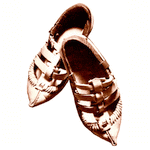Carnavalito – Bolivia [Traditional]
El Carnavalito is a traditional dance and music that was danced in America since before the arrival of the European colonizers; it has lasted and today continues to be practiced in the North of Argentina (Jujuy, Salta and in part of Catamarca and Tucumán), in the western part of Bolivia, but with certain figures from other dances included over time. It is also danced in northern Chile and parts of Peru, such as Arequipa and Cajamarca.
YouTube: CARNAVALITO “EL HUMAHUAQUEÑO”- Musica: Grupo Mercosur (Jujuy- Arg.) Version ’90
As the name suggests, El Carnavalito is danced at Carnaval and is quite common at other festivities, usually religious, and is done to various regional music. The international folk dance version of El Carnavalito is an old, simple, Indigenous peoples form. More elaborate couples forms were once in favor, especially in Argentina, but still continue to evolve now. On the YouTubes, one finds El Carnavalito being danced in the South American countries neighboring Bolivia that are of similar serpentine running line format done to similar music. The costumes are always very colorful and the movements are lively and joyful.
There are dance two forms in the folk dance videos. The original form described in dance notes starts with a simple QQQ on the beat then hold or hop for a Q count. The Bill & Karen Faust video follows the drum beat of Guadalquivir: SS QQS. I titled that the “Rhythmic Form.” There aren’t that many folk dance group videos of Carnavalito (I think I have all four below), but that form is also in another video. In the village examples I found, they step on each beat QQQQ (RLRL) with a small sharp kick to the side and back from the knee of the R while dropping on the L, so the rhythm is accented on the off beat (2).
The name of the song, Guadalquivir, is that of a river in Bolivia (it is also a river in Spain, which is much more prevalent in search results). There seem to be three categories of music results from South America for Guadalquivir: the one played with Andean instruments: siku or zampoña (pan pipes), quena (flute), charango (small guitar/lute), and bombo (bass drum) for El Carnavalito; a piece for flamenco dance; and a classical piece. I couldn’t find the lyrics in a quick search, but there are some singing versions included in the Music Examples.
David’s Carnavalito Compromise
To get both the “standard” and “rhythmic” versions in one dance session, as well as doing something more exciting than standing around for thirty seconds waiting to start dancing, I propose the following: Start the music (standard IFD version) and wait out two reps of SS QQS (4 bars of 2/4) and start the Rhythmic version on the R foot at the same time the flute starts playing. If all goes well, you will be on the L foot when the charango starts playing and you will do one last SS QQS the a transitional SS QQ and start immediately with the standard QQQ (SS QQ QQQh). The music actually drops a bar in the intro, so you can’t keep up the SS QQS and have to follow suite and drop a S.
- Start music, wait 2 reps of SS QQS
- Start dance when flute starts playing, R foot SS QQS
- When charango starts playing, you should be on L, do one last SS QQS
- Do a transitional SS QQ and progress immediately into QQQ(hold)

